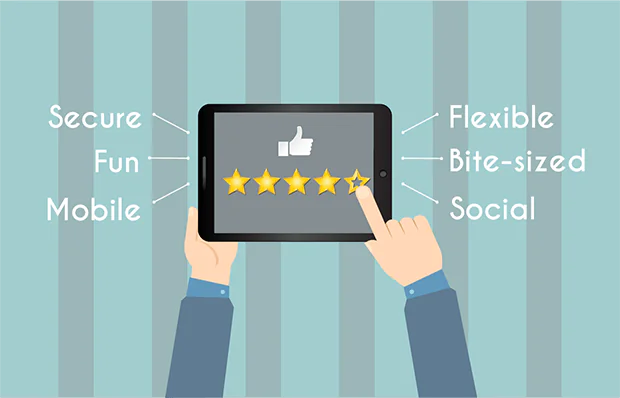Here are a couple of facts every employer or education provider should consider. According to Investopedia, around 365,000 Baby Boomers will soon begin retiring annually and these experienced team and department leaders will remove their expertise, leadership skills and knowledge from the overall skillset of their companies and organizations. On the other hand, millions of Millennials enter the workforce annually and will form about 50% of the workforce worldwide by 2020, according to PWC report.
This means that HR and L&D departments must find and raise the new leaders amidst the Millennials to replace the retiring Baby Boomers. However, Deloitte survey back in 2015 showed that only 6% of the respondents were feeling confident with the upcoming swap of generations and leaders in the workforce. This is why leadership training for millennials is crucial for every company’s success.
Leadership training is aimed at building inspirational, organizational, managerial, problem-solving and conflict-solving skills needed for developing a mindset of a leader.
Topics might include time management, team management, meeting planning and leading, communication skills, task delegation, workflow planning, monitoring and control, employee performance evaluation, personal inspiration, etc.
Of course, there are born leaders indeed, who know this all by themselves, or got their experience before joining the company. However, much more potential leaders can benefit from this knowledge and desperately seek for it. This is why providing such training can be a beneficial business for eLearning educators and must be the core of corporate learning, with 39% of L&D teams surveyed by Deloitte already offering digital leadership training to their employees.
The only thing to keep in mind is that these online courses must be created and delivered in a format most suitable for Millennials.
Mobile bite-sized learning
Millennials use mobile devices a lot. 95% of the US population owns some mobile device, 100% of adults aged 18-29 own a phone, 92% of them owns a smartphone. In addition, 51% owns a tablet, according to Pew Research Center study on the state of mobile usage in the US.This means that leadership training (as well as any other kind of mobile eLearning) must be delivered in small chunks that can be consumed via mobile devices in 3-7 minutes, or bite-sized learning.
Cloud-based LMS solutions providing the possibility of mobile materials downloading for offline study are the answer to this demand. They allow the learners access the training materials while going to an important meeting or preparing for a serious talk with colleagues regarding productivity, or making a decision on forming a team for a new project… In addition, if the materials can be saved on the smart phone, they can be revised even without the Internet access, making such option even more useful in the dynamic lifestyle of the Millennials.
Cross-platform blended learning
While many companies nowadays implement BYOD policy in their business practices, many still prefer to make sure their educational materials are accessible only within a secure environment, as knowledge is often the key to providing a competitive edge and should therefore be kept protected. From the other point of view, face-to-face education is somewhat limiting for Millennials, as it put certain restraints on their schedule and learning preferences.
Blended learning is the answer to this challenge, as it allows delivering most of the educational materials through the online medium, while accomplishing tests, practical tasks and other activities in the classroom. Due to such approach companies and organizations can ensure the security of their corporate training. In addition, educational bodies can significantly increase their student audience, adding value to their educational programs and allowing the learners to study conveniently, while retaining control over the grading, exams and certification process.
The other side of the coin with the BYOD policy is that the learners might need to begin the lesson on PC or laptop, continue with the next unit on their smartphone and finish by accomplishing the test on their tablet. This means the learning materials should be built with cross-platform approach in mind and deliver consistent learner experience on any device.
Learner engagement, social communication and gamification
Millennials are used to gaming as the means of interaction, engagement and gaining new information. Using this in eLearning helps boost its efficiency greatly. For example, leadership training gamification can include deploying serious games with fictional characters in real life situations. The learners can explore different scenarios and experience the outcomes of their actions, thus gaining management and leadership skills. As eLearning courses offer a possibility to split the learners into different groups to compete amidst each other in solving various problems, future leaders can gain firsthand experience in forming a team, choosing the roles, delegating the tasks, project management, workflow monitoring and performance analysis. The courses on said topics are also available, yet practical implementation is even more valuable.
The other side of gamification is introducing a system of rewards for achievements, badges for accomplishing tasks, points for participating in various activities and leaderboards for depicting the overall learning progress. Just make sure to make these leaderboards resettable every now and then, as seeing the undoubted leaders with millions of points is a daunting perspective for newcomers. Quite opposite, when the scores are reset periodically, the spirit of competition is at all times high.
The last, but not the least important component is social interaction. Integrating various social media and communication channels both inspires social learning and boosts engagement of learners, who can ask for advice and gain answer from their friends and colleagues at once. Strong social use ensures intense collaboration and helps build healthy corporate spirits.
These are 3 parts of leadership training for Millennials that help make it efficient, engaging and stick for long. Do you have any points to add or replace? Drop us a line, we are always open for discussion!
-
3467 28/Feb/2017
-
3460 19/Sep/2016



